Introduction to Perimetry:
Perimetry is a crucial diagnostic tool used in the field of ophthalmology to evaluate a person’s visual field. It provides valuable insights into the sensitivity and extent of a person’s vision, helping detect and monitor various eye conditions. By measuring the ability to see objects in different parts of the visual field, perimetry aids in the early detection, diagnosis, and management of conditions such as glaucoma, retinal detachment, and optic nerve disorders.
Have your doctor advised you to undergo perimetry test?
Your eye doctor, especially glaucoma specialist may have advised you to undergo a perimetry test, otherwise called the visual field test. Glaucoma is a disease of optic nerve, secondary to raised eye pressure. If left untreated, causes weakening of the nerve thereby causing visual field defect. Visual field is the function of the optic nerve, and perimetry is the test used to measure the visual field. So, during your routine eye test, when your doctor feels that your optic nerve is suspicious or when the eye pressure is high, he would ask you to undergo a set of
glaucoma tests, out of which perimetry is an important test.
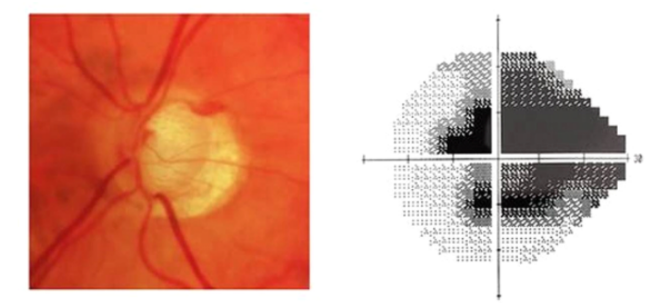
What is a perimetry?
Perimetry is a automated device used to measure ones visual field. This is a subjective test which is performed by the patient. This device has a illuminated bowl, on which lights of various
of intensities appear at static points. This test is used to measure the sensitivity of retina to the light at various points.
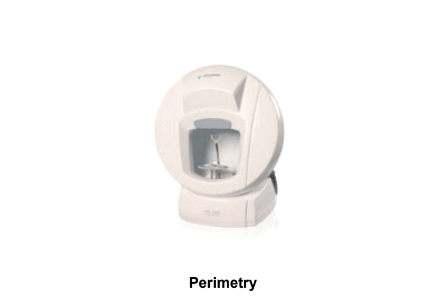
Perimetry eye Test: Procedure and Steps for Visual Field Assessment:
The patient is made to sit and place his/her head on the chin rest. He/she is given a button. The entire procedure is explained clearly by the doctor/perimetrist. The patient is supposed to look at the centre point throughout the test. The lights of various intensity from bright to dull, appears randomly at various points of the bowl. The eye is fixated at the centre steady yellow light, and a light stimuli appears at his/her 30 or 24 degree field. Whenever the patient sees the light stimuli, he responds to it by pressing the hand held button.
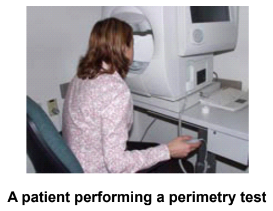
Perimetry Test Duration: How Long Does It Take to Assess Your Visual Field?
This test takes around 4 to 10 mins, based upon the strategy your doctor chooses and the time taken by you to respond to the light.
The Crucial Role of Perimetry Testing in Diagnosing Glaucoma:
Glaucoma causes structural damage to the optic nerve and functional loss of the visual field. Perimetry is the test used to measure the remaining visual fields.
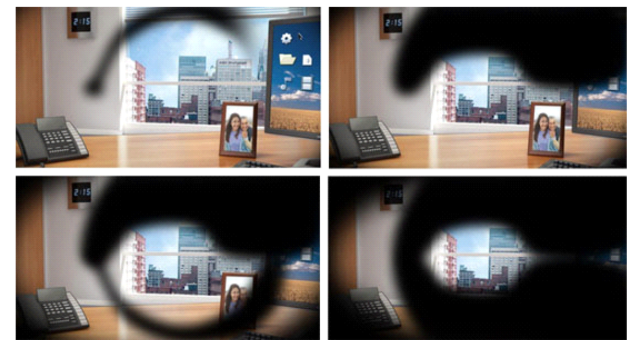
Beyond Glaucoma: Other Diseases Identified through Perimetry Testing
Perimetry not only helps in the diagnosis of glaucoma, but also helps to find the field damage secondary to neurological diseases. Any lesion/ scar in your retina, can also cause a field damage corresponding to that point of retina.
Are you having difficulty in performing the visual field test?
-Elderly patients, having problems with posture, difficulty in sitting for long time
-Problems due to lack of concentration, tiredness
-Stress about getting the test right
Are you having difficulty in performing the visual field test?
Perimetry is an important diagnostic test for glaucoma. Patients do have a major role to perform the test correctly. Always press the button, when you see the light. Enthusiastically pressing the button, even when the light not seen leads to high false positives, and not responding to light leads to high false negative results. It is also important not to move the eyes during the test. When not fixated at the centre point, could lead to fixation losses and lowers the reliability of the test result.
What is the role of Perimetrist?
Your perimetric explains to you the entire procedure in simple words. You may have to tell him some basic details, like your name, age, and date of birth. You will be seated in the chair comfortably and asked to place your chin at the chin rest, with your forehead touching the headrest. Remember that this test takes around 8-10 mins, adjust your posture so that you are
comfortable throughout the procedure. Any strain on your neck and back could disturb your concentration and affect the test results. Perimetrist uses your glass prescription, to correct if you have a refractive error. This test is performed in a dark room. He also takes care that the environment is silent. One eye is tested at a time, with one eye being occluded with a patch. If
you have any doubts or problems, you can always ask your perimeters to pause the test for sometime and resume once you are alright.
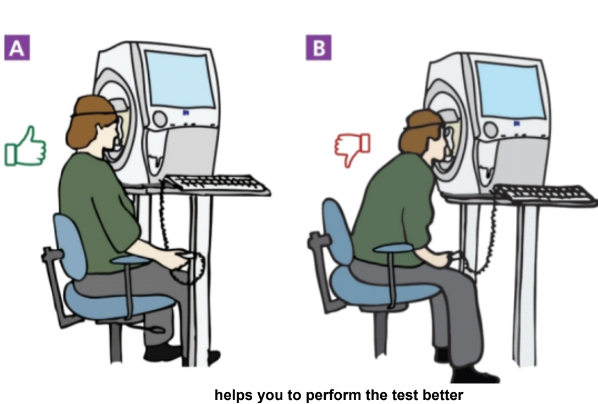
Why did your doctor ask you to repeat the test?
Your glaucoma specialist may ask you to repeat the test due to the following reasons:
- Few defects may appear, which is considered as learning curve. This is common in patients who perform the test for the first time. These defects may disappear on consecutive tests.
- Reports showing low reliability, like fixation loss errors, high false positive and negative errors.
- Sometimes, your doctor may ask to repeat the test to confirm the defect in cases of early glaucoma.
How often are you supposed to perform this test?
Since glaucoma is a progressive disease, your doctor may ask you to perform the test every 4-6 months if you are diagnosed with glaucoma or a case of suspect. Frequency also depends on the severity of the disease and the response to medications/surgery.
Do you doctor solely depends on perimetry to manage your glaucoma?
Though perimetry is a gold standard test for the diagnosis of glaucoma, your doctor correlates the structural damage of optic nerve clinically or by doing a OCT scan with your visual field test. Only after the clinical correlation, you are diagnosed and managed accordingly.
Author Details:
Dr. Thanemozhi Srinivasan is an esteemed ophthalmologist who has achieved remarkable success in the specialized field of glaucoma. With a diverse and illustrious background, she has garnered extensive experience and honed her expertise in diagnosing, managing, and treating this intricate eye condition. Driven by a profound dedication to her patients, Dr. Srinivasan embraces cutting-edge techniques and innovative treatments, aiming to optimize visual outcomes while delivering compassionate and individualized care. With her wealth of knowledge, remarkable proficiency, and unwavering commitment to excellence, Dr. Thanemozhi Srinivasan stands as a revered authority in the realm of glaucoma.

Book Your Appointment Now
Conclusion:
Perimetry is an essential test for the diagnosis and monitoring the progression in glaucoma. Patient’s contribution in performing the tests correctly adds to the success in the management of glaucoma disease.

